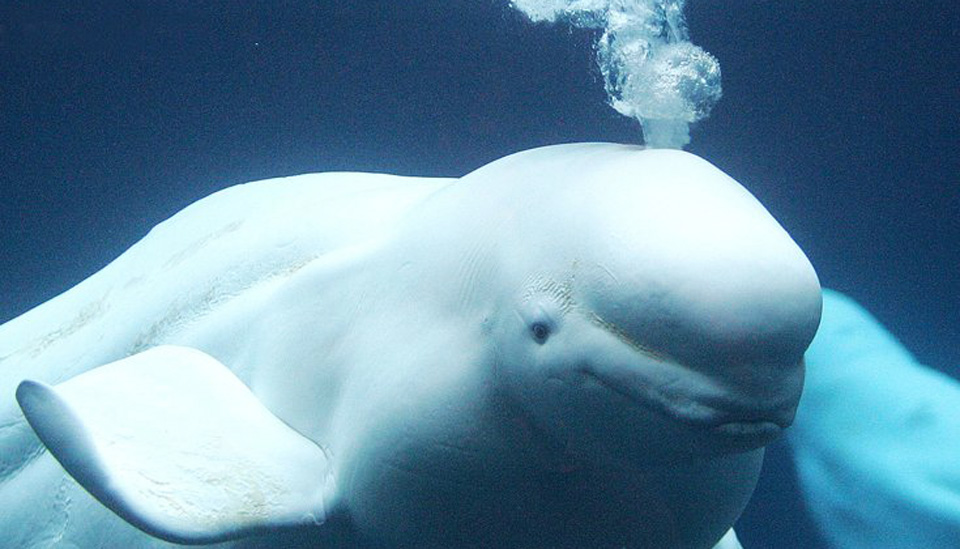
There’s a problem in Alaska, and it’s three months in the making. Since at least Feb. 7, when it was first detected, an ongoing natural gas leak has been poisoning the Cook Inlet, a 180-mile watershed stretching between the Gulf of Alaska and Anchorage. The seepage is the result of a ruptured underwater pipeline, which has been spewing hundreds of thousands of cubic feet of gas per day. The worst part? The leak may not stop anytime soon.
The pipeline belongs to a gas production facility built in 1964 by Shell, the most ancient of 16 offshore oil and gas platforms that currently take up residence in the Cook Inlet. The problem pipeline is now owned by Hilcorp Alaska, a company that waited until Feb. 20 before announcing, in a letter to the Alaska Department of Environmental Conservation, that it could not shut down the pipeline for fear of releasing crude oil into the ocean (in addition to natural gas), as it could take in a rush of cold seawater, which could shatter the entire pipeline. Furthermore, it stated that it could not yet repair the pipeline, due to heavy ice cover and dangerously strong tides currently surrounding it.
That ice has also created another problem: Because of the cover, it is not yet possible for scientists to get a realistic assessment of just how much damage is being done – and still could be done – to the environment and wildlife. Of particular concern is the safety of whales in the area, especially the belugas, who have been endangered since 2008. The National Oceanic and Atmospheric Administration (NOAA) stated, “If a significant hypoxic zone is created by a continuing natural gas discharge, Cook Inlet belugas and multiple physical and biological features of their critical habitat could be adversely affected.”
The gas leak might not have reached the eyes of the public as quickly as it did, had it not been for environmental nonprofit group Inletkeeper, which captured video footage of the disaster and uploaded it to YouTube. The group plans to sue Hilcorp; its advocacy director, Bob Shavelson, said, “Basically Hilcorp is saying, ‘we cannot respond to an event in the Cook Inlet in the winter.’ Our response to that is, ‘if you can’t address an event – whether it’s a gas spill or an oil spill – in Alaska in the winter, then you should go back to Texas, because you don’t have a right to do business here.”
While Hilcorp is apparently dragging its feet on coming up with a solution to this leak, the U.S. Pipeline and Hazardous Materials Safety Administration (PHMSA) has told them that the clock is ticking. The agency said that the natural gas discharge could endanger the public, as well as marine mammals, and has given them until May 1 to either completely repair the line or shut it down altogether. The problem, of course, is that the deadline is nearly a month and a half away, and gas is still leaking. This unpleasant fact has not been lost on concerned environmentalists.
“This dangerous leak could stop immediately if regulators did their job and shut down this rickety old pipeline,” said Miyoko Sakashita, oceans program director for the Center for Biological Diversity. “We’re disgusted with the Trump administration’s lack of concern about this ongoing disaster. Every day the leak continues, the pipeline spews more pollution into Cook Inlet and threatens endangered belugas and other wildlife.”
The Center was one of seven environmental groups that have now submitted a letter to the Trump administration, demanding that the pipeline be shut down immediately. The other groups were Friends of the Earth, the Natural Resources Defense Council, Defenders of Wildlife, Resisting Environmental Destruction on Indigenous Lands, Greenpeace, and the Eyak Preservation Council.
As the NOAA explained, this leak could create a hypoxic zone, which would exacerbate the situation. According to Chris Sabine, a chemical oceanographer with the administration, such a zone occurs when water saturated with methane is metabolized by bacteria, producing additional carbon dioxide and depleting oxygen levels in the inlet. This can harm fish and impact the food supply for the area’s estimated 340 beluga whales. An additional problem is that the extra CO2 could make the water more acidic, weakening the shells of some animals. The noise produced by the leak could add further stress, making some whales abandon their habitat.
Inletkeeper’s Bob Shavelson continued, “Hilcorp has put forth various excuses why it cannot shut down the leaking pipeline in Cook Inlet’s icy conditions, including that water would infiltrate the gas line, and other reasons. But the fact remains that Hilcorp simply wants to maintain production and profits without interruption.”
Greed is, of course, one of the traits of fossil fuel corporations. Dirty, obsolete energy like natural gas and oil – and the companies that promote it – will be in the crosshairs of activists during this year’s People’s Climate March. The upcoming mass demonstration is planned for Apr. 29 in Washington, D.C., where President Trump and his administration have embarked on anti-environmental campaigns and turned a blind eye to disasters like the one currently tainting yet another sensitive ecosystem.
Bill McKibben, climate activist and co-founder of 350.org, remarked, “Politicians need to be reminded, even as they do the bidding of the fossil fuel industry, that the rest of us are watching.”

MOST POPULAR TODAY

‘Warning! This product supports genocide’: Michigan group aims to educate consumers

After months of denial, U.S. admits to running Ukraine biolabs

Ohio: Franklin County treasurer attends Netanyahu meeting, steps up Israel Bond purchases

“Trail of Tears Walk” commemorates Native Americans’ forced removal

Hold the communism, please: SFMOMA’s Diego Rivera exhibit downplays artist’s radical politics






Comments